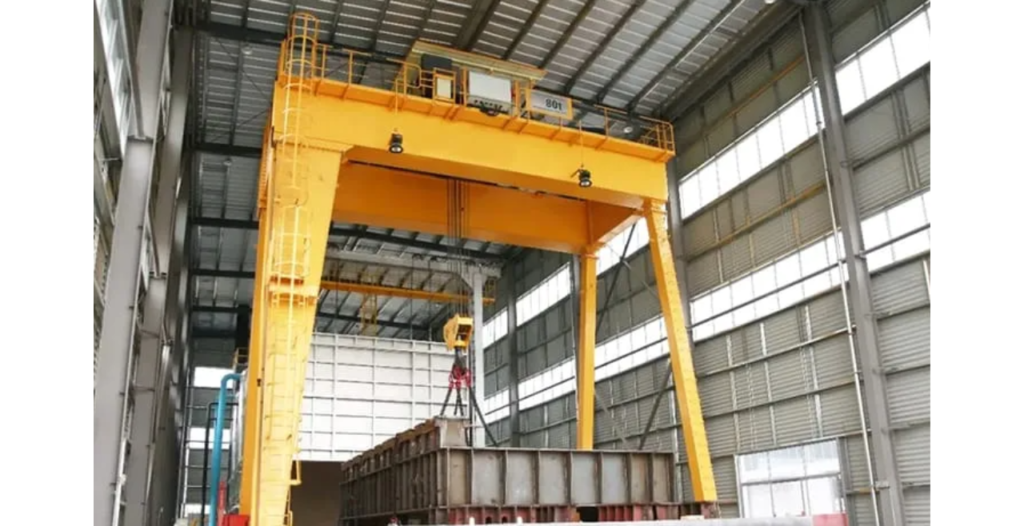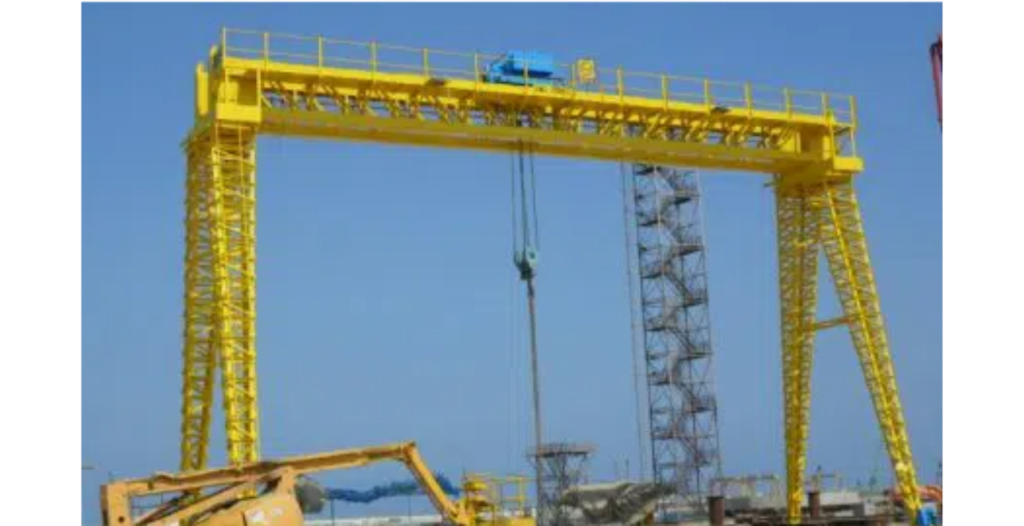CRANES & COMPONENTS TECHNOLOGY & PRODUCTS
Gantry Cranes
Gantry Cranes/ portal /overhead cranes are versatile industrial lifting equipment commonly used for material handling & heavy load transportation. These cranes are characterized by their overhead gantry structure with supporting legs on either side, allowing them to move along a runway or tracks on the ground. In this detailed overview, we will discuss the key aspects of gantry cranes, including their working principles, advantages, disadvantages, applications, materials of construction (MOC), and provide a summary. |
| 1. Working Principles: Gantry cranes operate based on straightforward mechanical principles. The key working principles include: |
| Structure: Gantry cranes consist of an overhead bridge or girder that spans the width of the workspace. This bridge is supported by legs or columns at each end, creating an open area beneath for load clearance. |
| Hoist: The hoist is mounted on a trolley that moves horizontally along the bridge’s length. The hoist’s hook or other attachment point is used to lift and lower the load. |
| Movement: Gantry cranes can move along tracks or runways on the ground. The movement is typically powered by electric motors or other means, allowing the crane to travel both horizontally and vertically. |

| 2. Advantages: |
| Versatility: Gantry cranes are highly versatile and can be customized for various applications, including single and double girder designs. |
| Heavy Lifting: They are capable of lifting heavy loads, ranging from a few tons to several hundred tons, depending on the design. |
| Mobility: Gantry cranes can be easily relocated within a facility or to different job sites if they are equipped with wheels. |
| Efficient Material Handling: They offer precise load positioning and efficient material handling capabilities. |
| Safety: Modern gantry cranes come equipped with safety features like limit switches, overload protection, and emergency stop buttons. |

| 3. Disadvantages: |
| Initial Cost: Gantry cranes can have a high initial purchase and installation cost, especially for larger capacities. |
| Space Requirements: They require significant floor space, both for the crane’s operation and the movement of loads. |
| Operator Skill: Skilled operators are needed to operate gantry cranes safely and efficiently. |
| Maintenance: Regular maintenance is necessary to ensure safety and optimal performance. |
| Downtime: Maintenance and repair can lead to downtime if not planned properly. |

| 4. Applications: Gantry cranes are used in a wide range of applications across various industries for material handling and heavy load transportation, including: |
| Construction: In construction sites for lifting and positioning heavy materials and equipment. |
| Shipping and Ports: In ports and shipyards for loading and unloading cargo from ships. |
| Warehousing: In warehouses for stacking and retrieving heavy goods. |
| Manufacturing: In manufacturing facilities for moving materials and products along production lines. |
| Aerospace: For assembling and maintaining aircraft. |
| Steel Industry: For handling steel coils, beams, and other heavy metal products. |
| 5. Materials of Construction (MOC): The materials of construction for gantry cranes depend on factors such as load capacity, environmental conditions, and industry-specific requirements. Common materials include: |
| Steel: The main structural components of gantry cranes are often made of steel for strength and durability. |
| Aluminum: Used in some applications where weight reduction is critical. |
| Special Coatings: Some parts may have specialized coatings to enhance corrosion resistance. |
| 6. Summary: Gantry cranes, also known as portal or overhead cranes, are versatile industrial lifting equipment used for material handling and heavy load transportation. They operate on mechanical principles, featuring an overhead bridge supported by legs or columns. Gantry cranes offer advantages such as versatility, heavy lifting capacity, mobility, efficient material handling, and safety features. However, they come with initial costs, space requirements, the need for skilled operators, maintenance considerations, and the potential for downtime during repairs. They find applications in construction, shipping, warehousing, manufacturing, aerospace, and the steel industry, with materials of construction chosen based on load capacity and environmental conditions. |


 Sales & Marketing:
Sales & Marketing:  Service Supports:
Service Supports:  Website:
Website: 